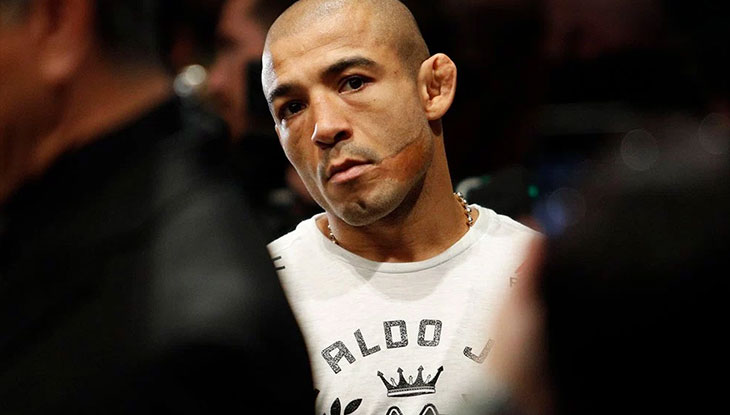The Fourth Major Format Change (June 9, 2000, UFC 26)
The UFC now had four weight classes. The heavyweight and middleweight divisions remained the same, but the lightweight division was shrunk to include only those fighters 155 to 170 pounds. This created space for the new bantamweight division, which included all fighters below 155 pounds. Therefore, Pat Miletich remained in the lightweight division and kept his belt.
The Second Minor Change (Nov. 17, 2000, UFC 28)
The UFC had been hosting its events in the southern United States and outside the country (Brazil, Japan) because most states’ athletic commissions had banned MMA fights within their jurisdictions. That changed at UFC 28. New Jersey and California were creating a body of rules that would govern the sport (called the Unified Rules of Mixed Martial Arts) and by 2000, The New Jersey State Athletic Control Board had adopted those rules.
By complying to those rules, the UFC was allowed to host their event at Trump Taj Mahal in Atlantic City. So, for this event, and used today, all weight classes and divisions complied with the Unified Rules of Mixed Martial Arts. The promotion returned to the old weight classes (see The Fourth Major Format Change) after this event until finally adopting the Unified Rules of Mixed Martial Arts permanently at UFC 31.
The Sixth Heavyweight Champion – Randy Couture (Nov. 17, 2000-Mar. 22, 2002)
Randy Couture captured his second heavyweight title at UFC 28 when he beat Kevin Randleman by TKO. He defended his title twice before losing it to Josh Barnett at UFC 36.
The First Bantamweight Champion – Jens Pulver (Feb 23, 2001-May 4 2001)
 It took until UFC 30 for the bantamweight division, created at UFC 26, to have its first champion. Pulver defeated Caol Uno by majority decision. Pulver defended his title twice before being stripped of it when he left the UFC over a contract dispute in 2002.
It took until UFC 30 for the bantamweight division, created at UFC 26, to have its first champion. Pulver defeated Caol Uno by majority decision. Pulver defended his title twice before being stripped of it when he left the UFC over a contract dispute in 2002.
By the next event (UFC 31), Pulver and his belt moved into the lightweight division to comply with the Unified Rules of Mixed Martial Arts the promotion adopted. This made Pulver confusingly but rightly the second lightweight champion of the UFC.
The Fifth Major Format Change (May 4, 2001, UFC 31)
The UFC permanently adopted the Unified Rules of Mixed Martial Arts, which solidified all their weight classes and divisions permanently into what we see today. That is:
Flyweight: under 126 pounds
Bantamweight: 126-135 pounds
Featherweight: 135-145 pounds
Lightweight: 145-155 pounds
Welterweight: 155-170 pounds
Middleweight: 170-185 pounds
Light Heavyweight: 185-205 pounds
Heavyweight: 205-265 pounds
Super Heavyweight: over 265 pounds
How these changes re-categorize the previous divisions set by UFC 26 is as follows: The former Heavyweight division was shrunk to include only fighters 265 pounds and under to create a Super Heavyweight division, but as no fighters at this time until the present day fit this category [there was only one super heavyweight fight in the history of the UFC (at UFC 28)] the division is dormant.
The former Heavyweight division would also shave off 5 pounds at its lower end so that the 200-205 pounds range could be included in the Light Heavyweight division. As to the former heavyweight champion at the time, Randy Couture, he remained the new heavyweight division champion.
The former Middleweight division was renamed the Light Heavyweight division and shrunk to only include fighters at the 185 pounds or above range. The Light Heavyweight division also absorbed 5 pounds of the former Heavyweight division to have a ceiling at 205 pounds. As for the former middleweight champion at the time, Tito Ortiz, he became the new light heavyweight champion.
The former Lightweight division remained the same as to weight class, but it was renamed the Welterweight division. Therefore, the former lightweight champion, Pat Miletich, became the new welterweight champion.
The former Bantamweight division was shrunk at its lower end to only include fighters at 145 pounds and above and be renamed the Lightweight division. Therefore, former bantamweight champion, Jens Pulver, became the new lightweight champion.
These changes left space for a newly created Middleweight division at 170-185 pounds, of which, Dave Menne became the first champion at UFC 33.
As for the lower weight classes of Featherweight, the new Bantamweight, and Flyweight divisions, no champions were belted until the UFC absorbed the WEC in 2010.
With the permanent adoption of the Unified Rules of Mixed Martial Arts, the UFC entered the Modern Years (2001-present).






Stay Connected